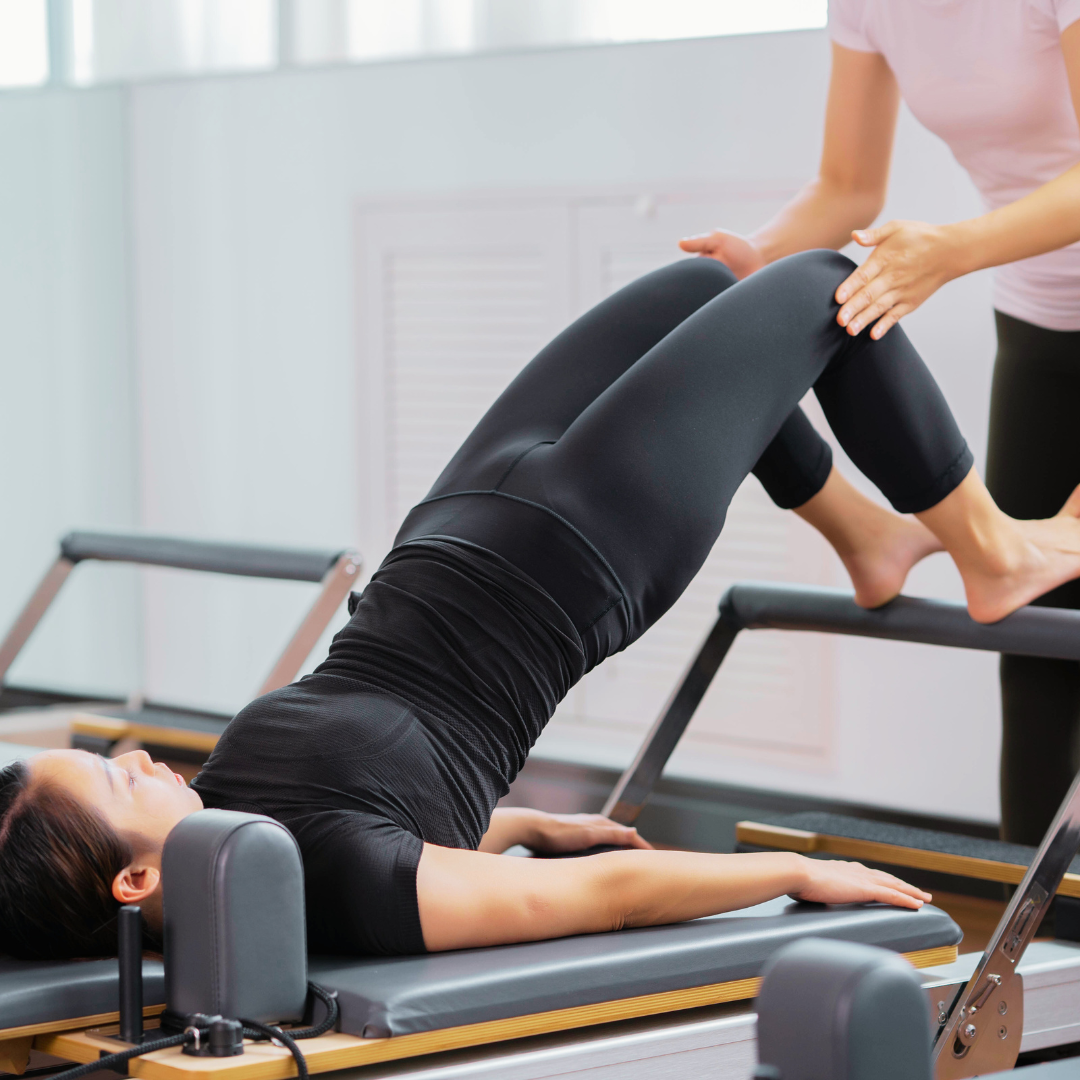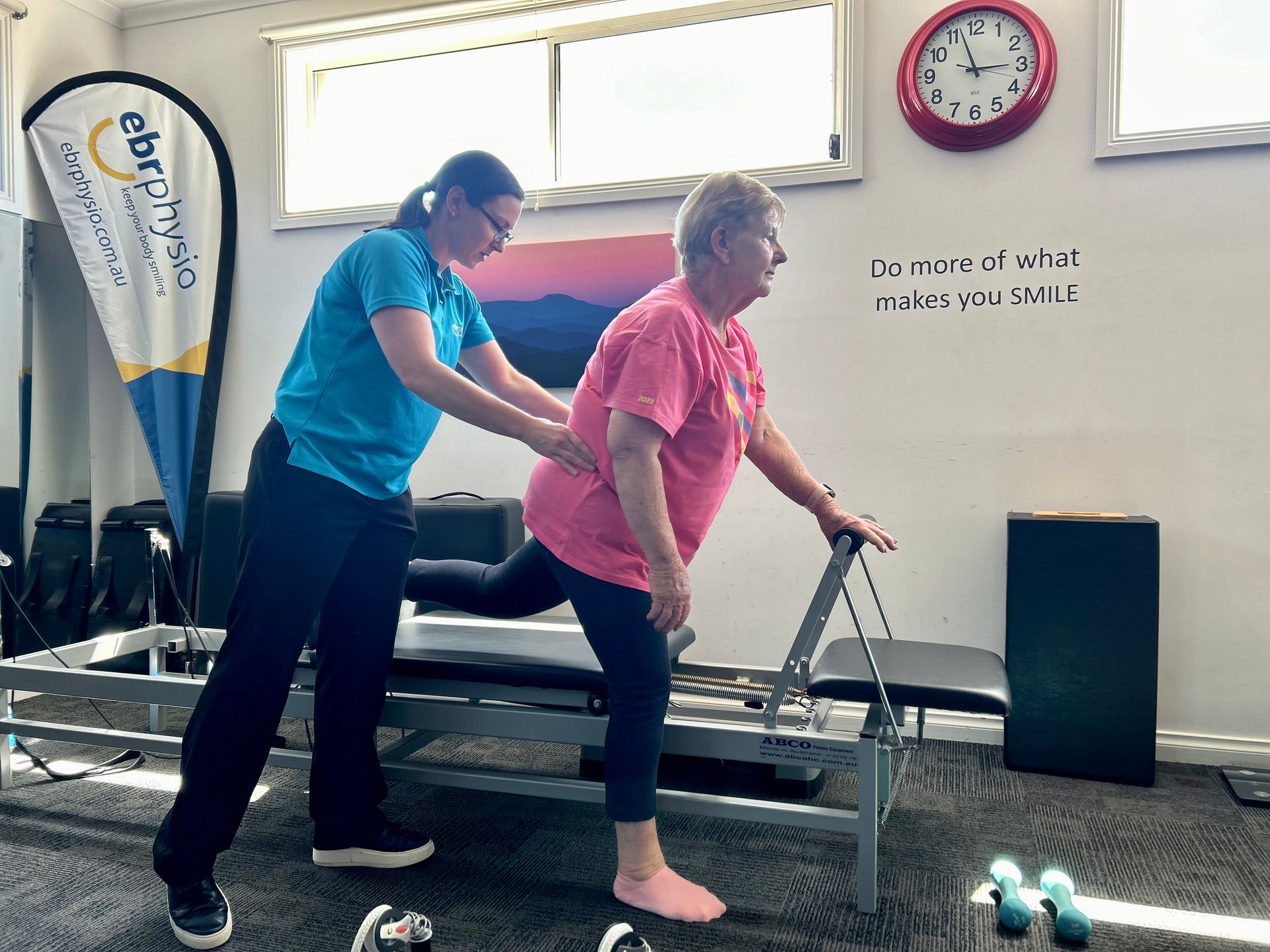Pilates vs Weight Training - which one is best?
Pilates vs Weight Training - which one is best?

Strength training is a mainstay of a healthy lifestyle, but the approach you choose—Pilates or weight training—can influence the outcomes you achieve. At EBR Physio, many clients ask about which approach suits their goals. Both methods build strength but differ in execution and benefits. Understanding these distinctions, supported by global research and trends, can guide you in making an informed decision.
1. Resistance Used
- Pilates: Employs body weight, resistance bands, or spring-loaded equipment like the reformer to create controlled resistance. The emphasis is on smooth, deliberate movements targeting multiple muscle groups simultaneously, enhancing control and stability. This approach is beneficial for those recovering from injuries or seeking to build endurance without excessive strain.
- Weight Training: Utilizes external weights such as dumbbells, barbells, or kettlebells to progressively overload muscles. This method leads to increased muscle mass and strength over time, often appealing to athletes or individuals aiming for muscle growth and power. Weight training also contributes to improved bone density, which is particularly important for older adults.
2. Core & Stability Focus
- Pilates: Centers on core activation. Each movement engages the deep stabilizing muscles of the core, improving posture, spinal alignment, and overall balance. This focus makes Pilates especially beneficial for individuals experiencing back pain, postural issues, or those recovering from surgery. read more
- Weight Training: Weight training exercises like squats and deadlifts engage the core but mainly target larger muscles. Core engagement tends to be secondary unless specific exercises targeting the core are incorporated. For clients requiring targeted postural work or core stability, Pilates may offer more direct benefits.
3. Flexibility & Mobility
- Pilates: Places a strong emphasis on mobility and flexibility while strengthening muscles. The controlled nature of Pilates exercises allows joints to move through their full range of motion, reducing stiffness and enhancing overall mobility. This is particularly advantageous for clients with conditions like arthritis, general stiffness, or those returning to movement after an injury.
- Weight Training: Builds muscle strength but can reduce flexibility if not balanced with stretching. Exercises performed with a limited range of motion or improper form may lead to stiffness. Incorporating mobility exercises or integrating Pilates into a weight training regimen can help maintain flexibility.
4. Injury Prevention & Rehabilitation
- Pilates: As a low-impact exercise form, Pilates is excellent for injury prevention and rehabilitation. The focus on controlled movement, posture, and muscle activation makes it ideal for clients recovering from musculoskeletal injuries, surgeries, or chronic pain conditions. At EBR Physio, we often prescribe clinical Pilates programs to support recovery from lower back pain, joint issues, or post-operative rehabilitation.
- Weight Training: When performed correctly, weight training strengthens muscles, bones, and connective tissues, reducing the risk of future injuries. However, poor technique, excessive load, or lack of supervision can lead to injuries, particularly in the lower back, shoulders, and knees. Clients new to resistance training may benefit from combining weight training and Pilates to build strength while maintaining control and minimizing injury risk.
Who May Benefit from Pilates?
Pilates is particularly suited for:
- Individuals recovering from injuries or surgery.
- Those suffering from chronic pain conditions such as lower back pain.
- Clients aiming to improve flexibility, posture, and overall mobility.
- Pregnant or postnatal women seeking a safe method to strengthen their core and pelvic floor.
- Athletes requiring cross-training to enhance stability and control.
- Older adults needing low-impact strength training to prevent falls and maintain mobility.
Who May Benefit from Weight Training?
Weight training is ideal for:
- Individuals looking to build muscle mass and increase strength.
- Those aiming to improve bone density and prevent osteoporosis.
- Athletes requiring explosive power and endurance.
- Clients focused on fat loss and body composition changes.
- Individuals managing metabolic conditions such as diabetes, as weight training improves insulin sensitivity.
Which One is Best for You?
The optimal approach depends on your individual goals, fitness level, and any existing injuries or conditions. Many clients at EBR Physio find that incorporating both Pilates and weight training into their routines provides a balanced, effective way to improve strength, stability, and overall health.
If you're uncertain which option suits you best, our team at EBR Physio can help. We assess your needs and guide you toward the most appropriate strength-training approach for your body.





